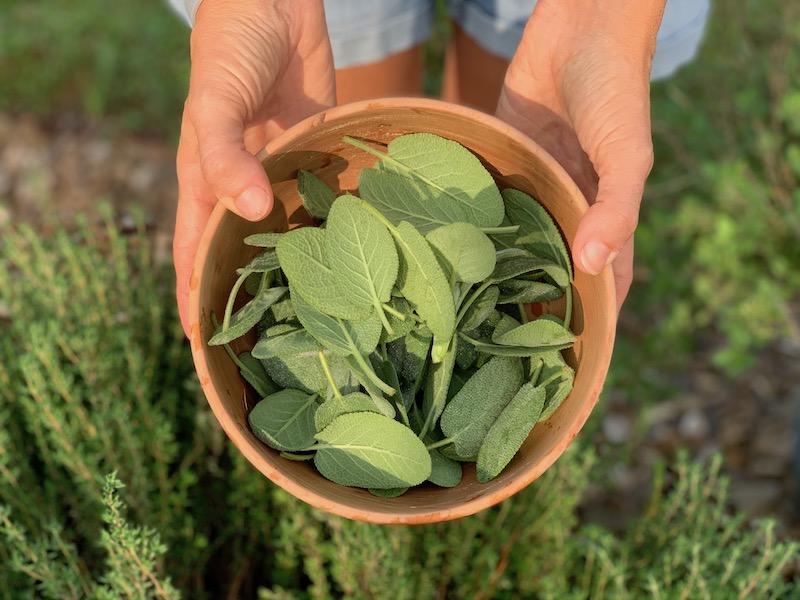Complete Container Herb Gardening
When I first started gardening, the sole reason I planted herbs was to save money. (Have you seen how insanely expensive herbs are at the grocery store?!)
What I soon discovered, though, was the wide world of benefits to growing your own herbs — medicinal support, pollinator attractors, homegrown spices, and beauty to name a few.
I now grow almost all of my herbs in containers and even have my herb garden right outside my kitchen door.
This led me to an exciting book, Complete Container Herb Gardening, by Sue Goetz, and in a recent conversation with her on the Beginner’s Garden Podcast, she answered many questions I and other gardeners have when it comes to growing herbs in containers. (Click here to hear our conversation or keep reading for the highlights.)

*links in this post may contain affiliate links.
Why Should We Grow Our Own Herbs?
When we grow our own herbs, just like with any fruit or vegetable, we are our own quality control expert. We know what we are putting into the soil, what we are using (or not using) as far as chemicals and pesticides, and we know exactly what we are going to be consuming from seed to harvest.
Anyone who has grown his or her own herbs knows that what we buy at the store can’t come close to matching the quality of homegrown. But quality is only the beginning. When we grow our own herbs, the harvest is multiplied exponentially from just one seed or plant. For the same cost of one bunch of an herb in the grocery store that you could use for a single recipe, you can grow an entire plant that could supply you with herbs all season long (or in some cases, many seasons).
Why is Growing Herbs in Containers an Ideal Choice?
Unlike many popular garden vegetables and fruit, there’s no need for an in-ground or raised bed garden. Not everyone has the space, right? Truly anyone can grow in a container, no matter where you live. But even if you do have a traditional garden for your edible plants, situating herbs in containers carries benefits you may not think of at first.
While I grow in a 2500+ square foot space, all of my herbs now grow in containers. One reason pots and containers are such a great choice for herbs is that herbs thrive with a good drainage system, of which many gardens are deficient. Plus, any container-grown plant, in my experience, requires much less upkeep like weeding and tending. And of course, some herbs (like those in the mint family) can become invasive when planted in the ground or a raised bed, so they are best kept contained in a nice pot to control their growth.
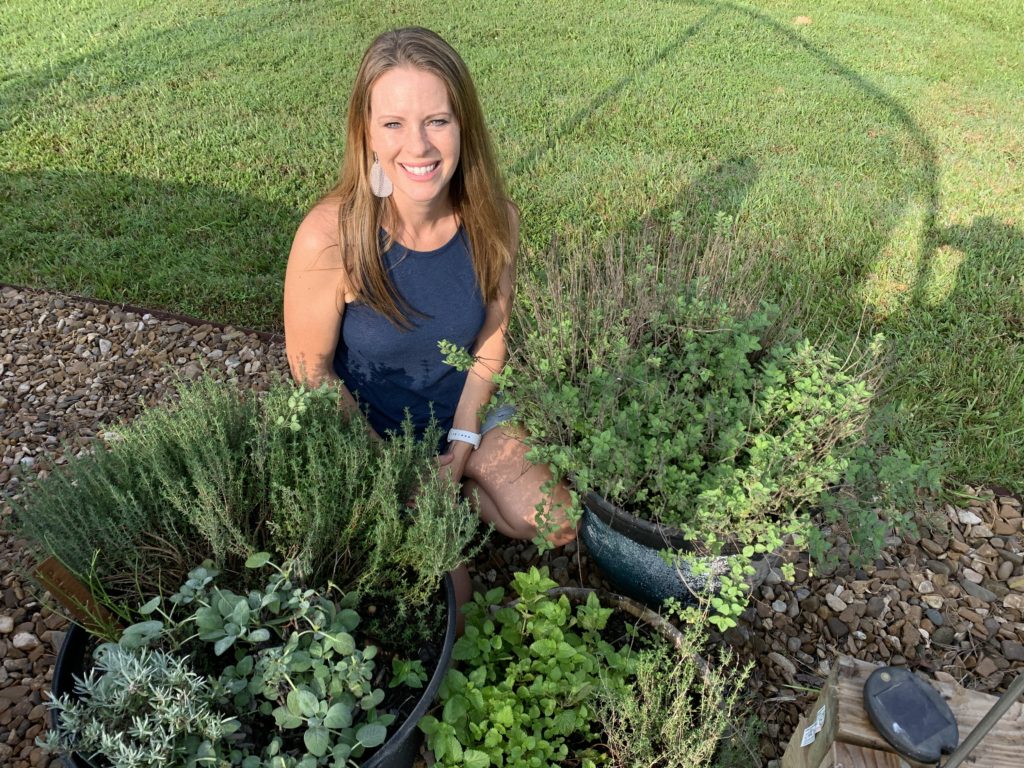
Do All Herbs Thrive in Containers?
There are a few herbs that struggle to thrive in containers, such as herbs with taproots. Fennel, dill, and tarragon seem to prefer to grow in the ground. But, as a gardener, feel free to test for yourself and see how it works for you.
What is the Ideal Soil for Container Gardening?
Most of the time, we tend to buy a bagged potting mix for vegetables in our pots and containers. This is usually a good choice for herb as well; just be sure to purchase a well-balanced mix without a lot of extra fillers or fertilizers. (When it comes to bagged soil, you get what you pay for.)
After you choose a basic potting mix, it helps to know a little bit about the particular herb you’re growing. Some herbs (like mint, parsley, and oregano) prefer more water and others (like lavender, rosemary, and thyme) thrive in more dry conditions. For those Mediterranean-style herbs that don’t love lots of water, test adding rocks on top of the soil to keep the soil from getting too saturated around the crown of the plant. You can also add an amendment like perlite to the potting mix to help with the drainage.
Still, don’t overcomplicate it! Most herbs will tell you when they need an adjustment in their environment. As you’re growing, observation is your friend. I’ve spent years watering my oregano and peppermint when it wilts, and it always turns out just fine!
Do Herbs Need to be Fertilized?
If you start with premium potting mix, your herbs will be fine for a long while, as they aren’t hungry plants that don’t need a lot of fertilizer. But, since they are in pots, they can’t source from the ground like plants in our garden could, so, you have to be the feeder.
For perennial herbs after the first year, you can fertilize once a season if you really need to, but I’ll be honest, I’ve never fertilized my herbs. They are very forgiving and will bounce back from season to season. Adding compost to the top of your pots yearly and letting the rain wash down into your plants will be a quick, hassle-free way to help feed them.
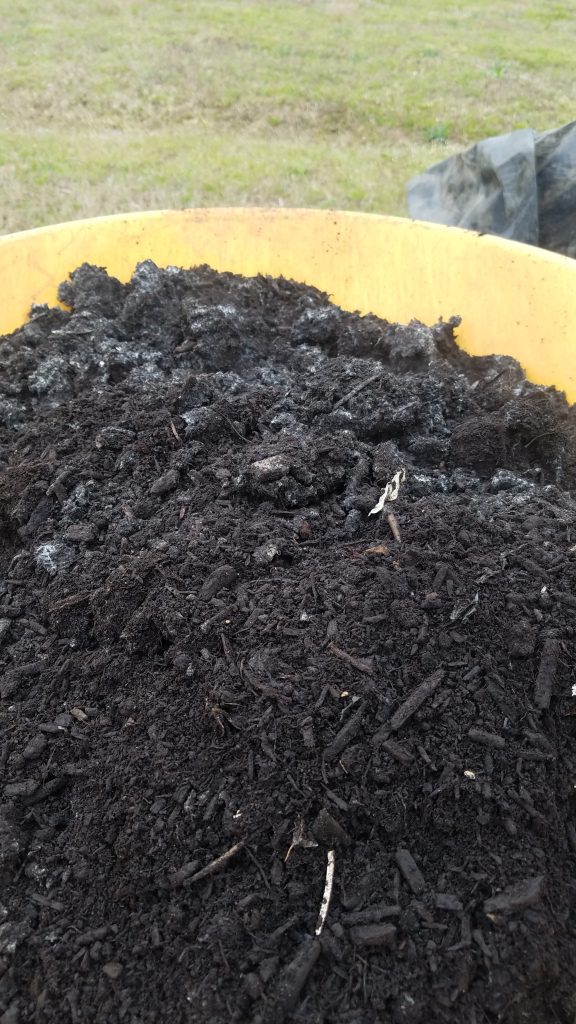
Which Herbs Should and Shouldn’t Be Planted Together?
A good rule of thumb when it comes to companion planting herbs in the same pot is not to plant your aggressive herbs with other plants. Mints, lemon balm, and oregano spread very quickly and overtake a pot within a season, so let them have their own space.
Other herbs like basil, parsley, chives, sage, thyme, and rosemary are herbs that could be in a shared space as they don’t spread out much. Adding a few of these to one giant pot is a great way to save space and also save money (as large pots are expensive), so combining when we can is an added bonus to our container gardening experience.
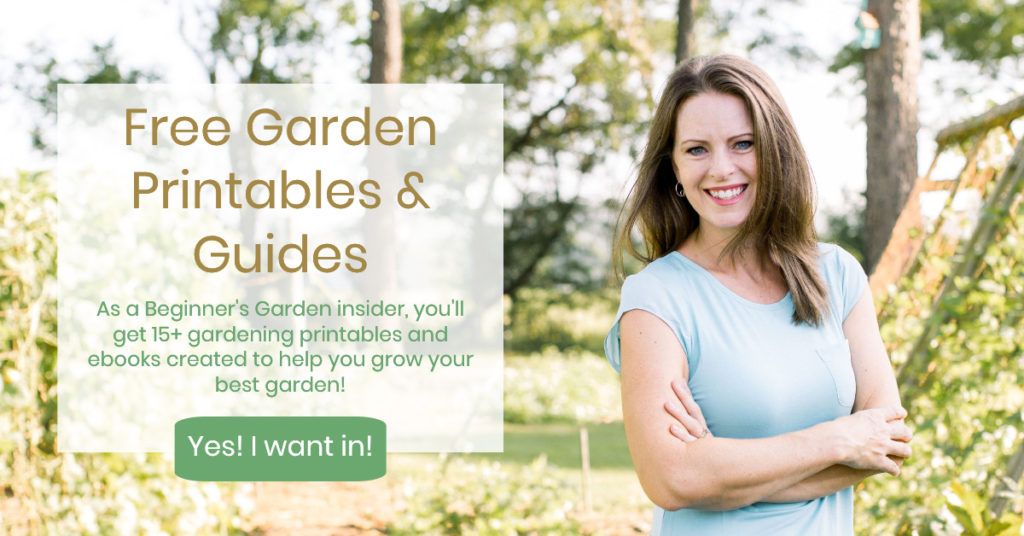
Do Some Herbs Need More Sun Than Shade?
Mediterranean herbs like rosemary, lavender, thyme, and sage are herbs that need to be in the sun. And while full-sun for vegetables usually means 8+ hours of sun per day, even these sun-hungry herbs can get away with a little less. But if you have a sunny spot, they’ll be happiest there.
Mint, sweet woodruff, cilantro, and parsley are herbs that prefer to be in the shade a little bit more. For them to be their happiest, just move your container to a shade for a longer part of the day.
Still, I’ve grown all of my herbs in a more or less part to full sun environment, and they have always thrived. Herbs tend to be less fussy than vegetables, so again, don’t overcomplicate it. You don’t have to do much to herbs to really get them to thrive.
What Size Pots Should We Use For Our Herbs?
A good rule here is to start with your space and go from there. If all you have available to you is a windowsill, then a 6″ pot is probably what you should start with. I don’t recommend anything smaller, as your herbs will rapidly outgrow that size.
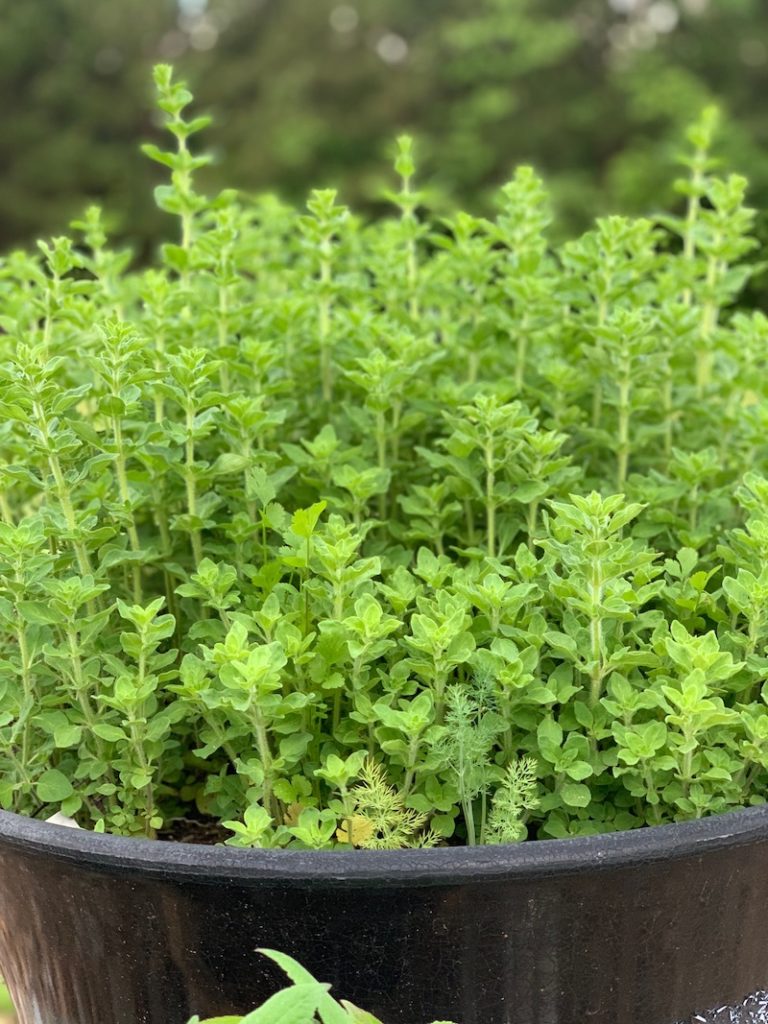
If you’re growing a combination of herbs, then you should really look at a larger pot, between 18-20″ in diameter. This might mean you place it on your back porch or deck. Will your lifestyle accommodate this? This is always the question you want to ask when picking out pots for your container gardening.
What Herbs Can Overwinter?
Whether perennial herbs will overwinter depends on your gardening zone. But generally, the tougher, hearty perennials that come back season after season include chives, oregano, mints, and sage. Rosemary and thyme also overwinter in my Zone 7 garden. Some perennial herbs enter a somewhat dormant period, but they will come back when the weather warms back up.
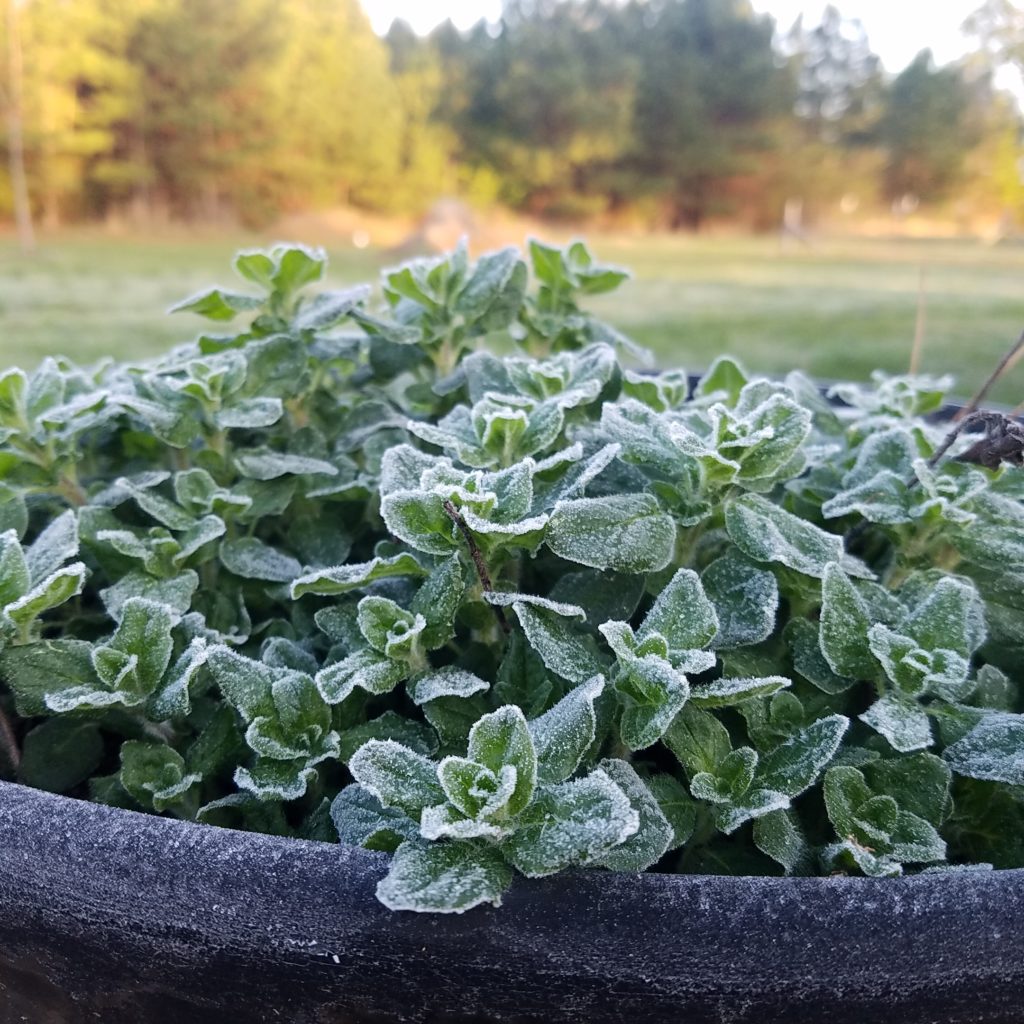
If they are nice and healthy, you really don’t need much to these other than let nature take its course and let them go dormant. As a precaution, you may add some straw to them to help insulate them over the winter, especially at the crown, but just remember to remove this as the weather starts to warm up.
Should I Bring Herbs Inside During the Winter?
I think it’s so great to have herbs in the house in the winter once the garden has gone to sleep. This is especially important for the herbs that won’t survive outside. But, you also need to be able to mimic the plant’s outdoor conditions. This may mean a sunny window or shady spot, depending on the herb.
How Do I Grow Lavender in Wet Climates?
Lavender, in its native climate, is grown in the sun, on a rocky hillside. A key to getting this to grow in a wet climate is to grow it in containers where we can control the water intake and drainage as much as possible.
If you grow lavender and you see the base of it turning brown, this is a telltale sign that there’s too much moisture. A tip here is to add a white rock to the top of the pot with the purpose of creating a moisture barrier between the soil and the plant.
Do I Need To Prune My Herbs?
Some herbs and plants need a mid-summer chop down — mainly the aggressive plants that we talked about earlier. Mints and oregano are my biggest offenders here. They are the plants that are greedy feeders and spreaders. They can also get woody so don’t be afraid to cut these down. They will grow back!
Usually, I harvest my entire mint and oregano plant in the late spring when they are the lushest and fullest. I may harvest once more in the fall, depending on the plant. The good thing is, you really can’t over-harvest these plants once they are well-established.
How Do I Handle Aggressive Growing Herbs?
There are a few signs that an herb has become root bound, which means it has overgrown the pot or container. If you can’t keep them hydrated and/or if the center starts to die out, this means there are more roots in the pot than soil. When this happens, it’s time to divide the plant or transplant it into a larger pot.
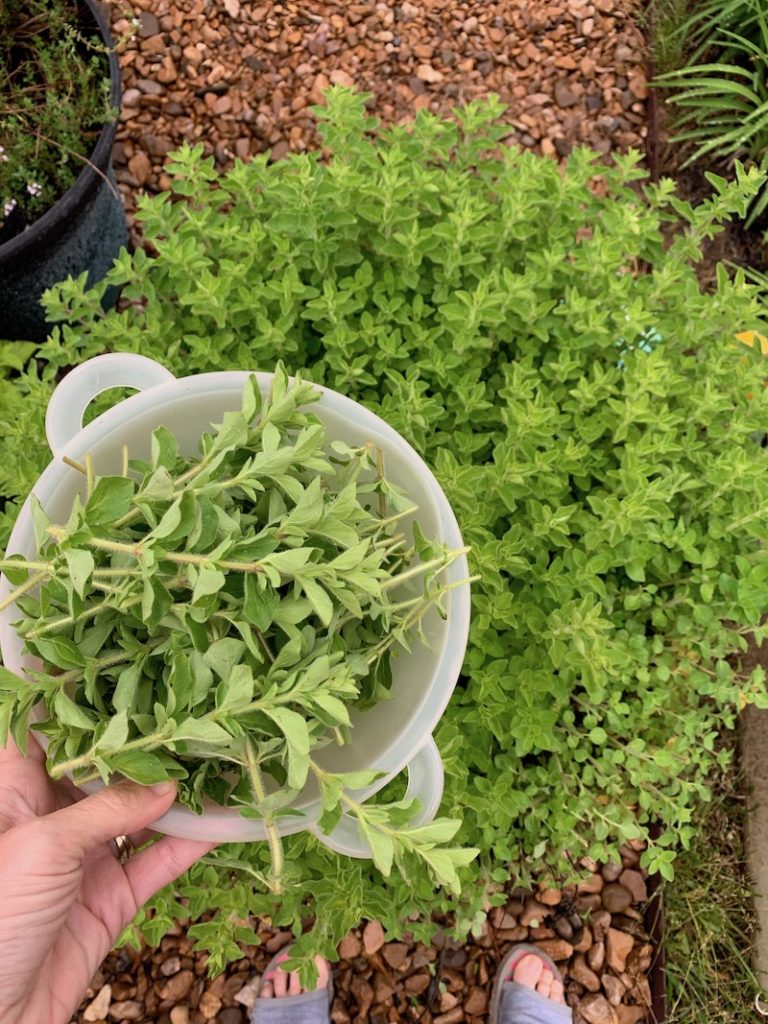
Once a year, typically during that spring checklist, check on those aggressive herbs. Don’t be afraid to cut these plants apart into pieces to regrow. You, quite literally, have to saw some of these root systems in half in order to break them down into smaller pieces. As long as you have enough of a root structure, they will bounce back once you replant them into moist soil again.
What Do I Need To Know To Start Container Gardening?
I think you’ll find that you don’t need to know a lot to grow herbs in containers. This is what makes it appealing to so many beginning gardeners. From one-pot to an entire herb garden, the possibilities are endless. This is the time to start planning for that spring garden. Grab that beautiful pot you find on sale this fall and plan to grow your favorite herb in it this spring! We can’t wait to see it!
Learn More:
To learn more specifics about container herb gardening, and to get inspiration on plant selection, companion planting, and more, I highly recommend Sue Goetz’s book, Complete Container Herb Gardening.
Do you get overwhelmed with garden planning?

Subscribe here for my best tips to plan your garden in just 7 days -- all for FREE.
Plus, I'll send you my "In the Garden E-mail" on Fridays, periodic updates on garden resources relevant to you, and you'll receive access to my entire bank of free garden downloads!
You are also agreeing to our privacy policy.

